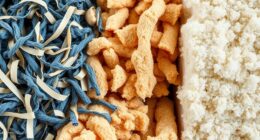Coincidentally, as I was getting ready to write this article, a tiny house fly buzzed past my face. This unexpected event piqued my interest in these seemingly harmless creatures and the potential risks they could pose to our health and well-being. So, let’s delve into the world of small house flies and uncover the scientific truths about their impact.
Tiny house flies, scientifically known as Musca domestica, may appear insignificant, but they can carry a host of diseases that can wreak havoc on our bodies. From food safety concerns to triggering allergies and asthma, these pests have the potential to disrupt our daily lives.
In this article, we will explore the identification of these flies, the common diseases they carry, and their role in transmitting parasites. We will also discuss DIY remedies and natural repellents, as well as professional pest control solutions to keep these pesky insects at bay.
So, if you’re curious about how harmful these tiny house flies truly are and want to maintain a healthy living environment, read on to discover the best strategies for managing and preventing their presence in your home.
Key Takeaways
- Tiny house flies can carry diseases that harm human health, including salmonellosis and E. coli.
- Flies transfer bacteria, increasing the risk of contamination and causing cross-contamination.
- Tiny house flies carry allergens like pollen, dust mites, and mold spores, worsening allergies and triggering asthma attacks.
- Regular cleaning, proper waste disposal, and improving indoor air quality are crucial to eliminate breeding grounds for tiny house flies and reduce health risks.
Identification of Tiny House Flies
You need to be able to identify those pesky tiny house flies before they start driving you crazy! When it comes to fly species, the tiny house fly is a common nuisance that can quickly become an annoyance in your home. These flies, also known as fruit flies or vinegar flies, are usually small in size, measuring only about 1/8 inch in length. They have a yellowish-brown body with bright red eyes, which are distinctive features that can help you identify them.
Understanding the life cycle of these tiny house flies can also aid in their identification. Like all flies, they undergo a complete metamorphosis, consisting of four stages: egg, larva, pupa, and adult. The eggs are laid on decaying organic matter, such as fruits, vegetables, or damp areas in your home. The larvae, commonly known as maggots, feed on this organic matter until they pupate and eventually emerge as adult flies.
Now that you know how to identify these tiny house flies and understand their life cycle, it’s important to be aware of the potential risks they pose. These flies are known to carry and transmit various diseases, including salmonellosis and E. coli. These common diseases can be contracted by consuming contaminated food or through direct contact with fly-infested surfaces. Therefore, it’s crucial to take necessary precautions to prevent their presence in your home.
Common Diseases Carried by Flies
Flies are not just annoying pests, but they can also transmit various diseases to humans. One category of diseases carried by flies is foodborne illnesses. These occur when flies contaminate our food with bacteria or other pathogens.
Another category is vector-borne diseases. In these cases, flies act as carriers of disease-causing organisms, such as viruses or parasites, and transmit them to humans through their bites.
These diseases can have serious health implications. It’s important to take measures to keep flies away from our food and living spaces.
Foodborne Illnesses
When those pesky little insects start buzzing around your kitchen, it’s like inviting a potential outbreak of foodborne illnesses right into your home. Flies are notorious carriers of harmful bacteria and pathogens, making them a significant threat to food safety. Here are three reasons why foodborne outbreaks can occur due to flies:
-
Contamination: Flies land on various surfaces, including decaying matter, garbage, and animal waste, picking up bacteria such as Salmonella and E. coli. When they land on food or food preparation areas, they transfer these pathogens, leading to contamination.
-
Transmission: Flies have bristles on their legs and mouths, allowing them to easily transfer bacteria from one surface to another. They can deposit pathogens onto utensils, cutting boards, and even directly onto food, increasing the risk of foodborne illnesses.
-
Cross-contamination: Flies can move between different food items, spreading bacteria from contaminated foods to uncontaminated ones. This can occur during meal preparation or when flies land on uncovered food, allowing the transfer of harmful microorganisms.
Preventing fly infestations and practicing proper food handling and storage techniques are crucial in reducing the risk of foodborne illnesses. Transitioning to the subsequent section about ‘vector-borne diseases,’ it’s essential to understand the potential health hazards associated with flies beyond just foodborne illnesses.
Vector-Borne Diseases
Imagine a world where insects hold the power to transmit dangerous diseases, lurking in the shadows and posing a hidden threat to your health and well-being. Vector-borne diseases, which are transmitted by insects like flies, mosquitoes, and ticks, are a major concern for public health. These tiny creatures act as carriers, transmitting pathogens from one host to another, leading to illnesses such as malaria, dengue fever, Zika virus, and Lyme disease. To combat these diseases, vector control measures are implemented, focusing on reducing the population of disease-carrying insects and preventing their spread. This includes strategies like insecticide use, habitat modification, and public awareness campaigns. By targeting vectors, we can effectively reduce the incidence of these diseases and protect public health. Moving on to the impact on food safety and hygiene…
Impact on Food Safety and Hygiene
Although small, tiny house flies can have a significant impact on the safety and hygiene of our food. Fly infestations pose health risks as they’re known to carry pathogens that can contaminate our meals. These pests are attracted to decaying organic matter, including food waste, which makes them common visitors in kitchens and dining areas.
House flies have the ability to transfer disease-causing bacteria, such as Salmonella and E. coli, onto surfaces, utensils, and even directly onto our food. This can result in foodborne illnesses if the contaminated items are consumed without proper cooking or cleaning. Additionally, the presence of house flies can lead to cross-contamination, where the pathogens are transferred from contaminated surfaces to other clean areas or food items, further increasing the risk of foodborne diseases. Therefore, it’s crucial to maintain a clean and sanitary environment to prevent fly infestations and minimize the potential health risks they pose.
Transitioning into the subsequent section about allergies and asthma triggers, it’s important to note that house flies can also contribute to respiratory issues.
Allergies and Asthma Triggers
After discussing the impact of tiny house flies on food safety and hygiene, it’s crucial to delve into another significant aspect: allergies and asthma triggers. As someone with a scientific background, I understand the importance of allergy management and maintaining indoor air quality.
Tiny house flies, although seemingly harmless, can contribute to the worsening of allergies and the triggering of asthma attacks. These flies carry allergens such as pollen, dust mites, and mold spores on their bodies. When they land on surfaces, these allergens can be transferred, leading to allergic reactions in susceptible individuals.
Moreover, the presence of house flies indoors can increase the concentration of airborne allergens, further exacerbating allergies and triggering asthma symptoms.
To effectively manage allergies and asthma, it’s essential to minimize the presence of tiny house flies indoors. Regular cleaning and proper waste disposal are crucial to eliminate potential breeding grounds for these insects. Additionally, improving indoor air quality through proper ventilation and filtration systems can help reduce the concentration of allergens in the air.
Understanding the role of tiny house flies in the transmission of parasites is another critical aspect to consider. These flies can act as vectors, spreading disease-causing organisms. Therefore, it’s essential to explore this topic further and understand the potential risks associated with these insects.
Role in the Transmission of Parasites
To fully grasp the potential risks associated with these pesky insects, you must understand how their presence can act as a gateway for disease-causing organisms to infiltrate your living space. House flies, although tiny in size, can play a significant role in the transmission of parasites, posing a threat to public health.
These insects are attracted to decaying organic matter, including feces, garbage, and rotting food. As they feed on these sources, they can pick up various pathogens, including parasites such as helminths and protozoa, on their legs and mouthparts.
Once contaminated, house flies can transfer these parasites to human food or surfaces, potentially leading to infections. Parasite transmission prevention is crucial to minimize the impact on public health. Proper sanitation practices such as regular cleaning and disposal of waste can help reduce the attraction of flies. Additionally, ensuring that food is properly stored and covered can prevent contamination.
Understanding the role of house flies in parasite transmission is essential for implementing effective prevention and control measures. By minimizing their presence and access to potential breeding sites, we can reduce the risk of infections caused by these disease-carrying organisms.
Taking proactive measures to control house flies will be discussed in the subsequent section, emphasizing the importance of prevention and control in safeguarding our living environments.
Prevention and Control Measures
In order to prevent and control the transmission of parasites by tiny house flies, it’s crucial to implement proper sanitation practices. This involves regularly cleaning and disposing of waste materials, as well as keeping food storage areas clean and sealed.
Additionally, the use of fly traps and screens can help to reduce the number of flies in an area, thus minimizing the risk of transmission.
Lastly, eliminating potential breeding sites for flies, such as stagnant water and decaying organic matter, can significantly reduce their population and prevent the spread of parasites.
Proper Sanitation Practices
Maintaining proper sanitation practices is essential in keeping tiny house flies from becoming a nuisance. To prevent a fly infestation and minimize health risks, it’s crucial to follow these guidelines:
-
Cleanliness: Regularly clean all areas of your home, paying special attention to areas where flies are commonly found, such as kitchens and garbage cans.
-
Food storage: Store food in sealed containers to prevent flies from accessing it. Clean up spills and crumbs immediately.
-
Garbage disposal: Properly dispose of garbage in sealed bags and regularly empty bins to avoid attracting flies.
By practicing these sanitation measures, you can significantly reduce the presence of tiny house flies in your home.
However, in cases where prevention alone isn’t enough, the use of fly traps and screens can provide additional protection. These methods will be discussed in the next section.
Use of Fly Traps and Screens
Ready to keep those pesky little pests at bay? Let’s dive into the effective use of fly traps and screens to protect your home from invasion!
When it comes to fly control methods, fly traps and screens are highly effective in reducing the presence of house flies. Fly traps work by luring flies in with attractive scents or visual cues and then trapping them, preventing further reproduction.
Screens, on the other hand, act as a physical barrier, preventing flies from entering your living space. By installing screens on doors and windows, you can enjoy fresh air while keeping flies out. The benefits of using fly screens are twofold: they not only keep flies from buzzing around your home but also reduce the risk of fly-borne diseases.
Now, let’s move on to the next section and discuss the elimination of breeding sites, an essential step in effectively controlling house flies.
Elimination of Breeding Sites
In my research on fly control, I discovered that using fly traps and screens can be helpful in reducing the number of tiny house flies. However, to truly tackle the problem, it’s crucial to eliminate their breeding sites. This is a key aspect of pest management techniques. By targeting the areas where flies lay their eggs, we can effectively disrupt their life cycle and prevent further infestation.
To accomplish this, here are four practical steps to consider:
-
Remove any standing water sources, such as birdbaths or open containers, where flies can lay their eggs.
-
Clean up and dispose of organic waste, such as rotting fruits and vegetables, as flies are attracted to these materials.
-
Regularly clean and sanitize garbage cans and dumpsters to eliminate potential breeding sites.
-
Seal any cracks or openings in doors, windows, or walls to prevent flies from entering your home.
By implementing these breeding site elimination strategies, we can significantly reduce the presence of tiny house flies.
Now, let’s explore DIY remedies and natural repellents to further combat these pesky insects.
DIY Remedies and Natural Repellents
To keep those pesky tiny house flies at bay, you can easily whip up some DIY remedies and natural repellents. Natural remedies and home remedies can be highly effective in deterring these annoying insects from invading your living space.
One popular option is making your own fly repellent spray using essential oils. Mix a few drops of lavender, eucalyptus, or peppermint oil with water in a spray bottle and apply it to areas where flies tend to gather. These oils contain compounds that flies find repulsive, making them less likely to linger around.
Another effective DIY option is creating fly traps using common household items. For example, you can fill a jar with apple cider vinegar and cover it with plastic wrap, poking a few small holes in it. The flies will be attracted to the vinegar’s scent, enter the jar, and be unable to escape.
These DIY remedies and natural repellents provide a cost-effective and eco-friendly way to combat tiny house flies. However, if the infestation persists or becomes unmanageable, it may be necessary to explore professional pest control solutions to ensure a fly-free living environment.
Professional Pest Control Solutions
After exploring various DIY remedies and natural repellents for dealing with tiny house flies, it’s important to acknowledge that sometimes these methods may not yield the desired results. In such cases, it may be necessary to turn to professional pest control solutions for effective management of these pests.
Professional pest management offers several benefits that make it a viable option for dealing with house flies.
Firstly, hiring experts in pest control ensures that the problem is addressed comprehensively. These professionals have the knowledge and experience to identify the root cause of the fly infestation and implement appropriate measures to eliminate it. They can also assess the extent of the infestation and tailor their treatment plan accordingly, ensuring the most efficient use of resources.
Furthermore, professional pest control solutions often involve the use of specialized equipment and products that aren’t readily available to the general public. These tools and treatments are designed to be highly effective in eradicating house flies, minimizing the chances of recurrence.
By entrusting the task of fly control to professionals, homeowners can save time and effort that would otherwise be spent on trial and error with DIY methods. With their expertise, they can provide a more targeted and long-lasting solution, giving homeowners peace of mind.
Transitioning into the subsequent section about "tips for keeping flies away from your home," it’s important to take a proactive approach in preventing future infestations.
Tips for Keeping Flies Away from Your Home
One effective way to ensure a fly-free home is by implementing simple yet impactful tips that will leave you feeling relieved and confident in your pest control efforts. By keeping flies at bay, you can create a healthy living environment that is free from these bothersome pests. Here are some natural fly repellents that can help you achieve this goal:
| Tip | Description |
|---|---|
| Keep your home clean | Flies are attracted to food and garbage, so keeping your home clean and free of crumbs and spills will make it less appealing to them. |
| Use fly screens | Install fly screens on windows and doors to prevent flies from entering your home. |
| Remove standing water | Flies breed in stagnant water, so regularly check and remove any standing water sources around your home. |
| Plant insect-repellent herbs | Planting herbs like basil, lavender, and mint can naturally repel flies and other insects. |
| Use essential oils | Certain essential oils like peppermint, eucalyptus, and lemongrass can act as natural fly repellents. |
By incorporating these tips into your daily routine, you can effectively keep flies away from your home and create a healthier living environment. With a fly-free home, you can enjoy a more pleasant and comfortable living space. In the next section, we will discuss the conclusion and how to manage tiny house flies for a healthy living environment.
Conclusion: Managing Tiny House Flies for a Healthy Living Environment
In conclusion, effectively managing flies in your home is essential for creating a healthy living environment, and implementing natural fly repellents can make a significant difference.
Did you know that flies can carry over 200 different pathogens? These tiny pests can be more harmful than we realize, as they can transmit diseases such as typhoid fever, cholera, and dysentery. To ensure a healthy living environment, it’s crucial to take proactive measures in managing fly infestations.
Here are some strategies to consider:
-
Regular cleaning: Maintaining cleanliness in your home is key to managing flies. Regularly remove trash, clean spills, and wipe down surfaces to eliminate potential breeding grounds.
-
Proper food storage: Flies are attracted to food sources, so it’s important to store food properly. Keep food containers tightly sealed and clean up any crumbs or spills immediately.
-
Natural fly repellents: Consider using natural fly repellents to deter flies from entering your home. Essential oils such as citronella, lavender, and eucalyptus have been found to be effective in repelling flies.
By following these management strategies, you can reduce the health risks associated with flies and create a healthier living environment for you and your family. Remember, prevention is key in effectively managing fly infestations.
Frequently Asked Questions
How long do tiny house flies live?
Tiny house flies, also known as fruit flies, have a relatively short lifespan of around 8-10 days. However, within that time, they’re highly efficient at reproducing. Female house flies lay their eggs on decaying organic matter, such as fruits or vegetables. The eggs hatch into larvae, which then develop into adult flies.
To prevent infestations, it’s crucial to eliminate potential breeding sites by keeping kitchens clean and disposing of organic waste properly. While tiny house flies don’t directly cause damage to property or belongings, their presence can be a nuisance and a sign of unsanitary conditions.
Can tiny house flies bite humans?
Tiny house flies can indeed bite humans, although their bites aren’t typically harmful. These pesky pests are more of a nuisance than a health threat. However, they can be a source of allergies for some individuals. To prevent infestations, it’s crucial to maintain cleanliness and proper sanitation in your home. Regularly clean up food spills, dispose of garbage properly, and seal any cracks or openings where these tiny house flies can enter.
Are tiny house flies attracted to certain types of food?
Tiny house flies are attracted to a variety of foods, especially those that are decaying or fermenting. They’re not repelled by certain smells, as they’re highly attracted to strong odors.
However, it’s important to note that tiny house flies can spread diseases to pets. They can carry pathogens on their bodies and transfer them to animals through contact or ingestion.
Therefore, it’s crucial to take measures to prevent fly infestations and protect the health of pets.
What is the life cycle of a tiny house fly?
The life cycle of a tiny house fly, scientifically known as Musca domestica, consists of four stages: egg, larva, pupa, and adult.
The female fly lays her eggs in decaying organic matter, such as garbage or animal feces. After hatching, the larvae feed on the organic matter, molting several times as they grow.
Next, they enter the pupal stage, during which they transform into adult flies.
The entire process takes about 7-10 days, depending on environmental conditions.
Do tiny house flies carry any specific viruses or bacteria that can harm humans?
Tiny house flies, though small in size, can pose significant health risks to humans. These pesky insects have the potential to transmit various viruses and bacteria that can cause harm.
Take, for example, the metaphor of a tiny needle carrying a deadly toxin. Similarly, tiny house flies can carry diseases such as salmonella, E. coli, and even the dreaded Zika virus.
Therefore, it’s crucial to address the health risks associated with tiny house flies and take necessary precautions to prevent their transmission.
Conclusion
In conclusion, managing tiny house flies is crucial for maintaining a healthy living environment. These seemingly harmless insects can pose serious risks to our health and safety.
Did you know that a single house fly can carry over 100 different pathogens? This statistic highlights the importance of keeping our homes free from flies to prevent the spread of diseases.
By implementing DIY remedies, natural repellents, and professional pest control solutions, we can effectively control and eliminate these pests, ensuring a safe and hygienic living space.
Hi, I’m Emma. I’m the Editor in Chief of Tiny House 43, a blog all about tiny houses. While tree houses are often associated with childhood, they can be the perfect adult retreat. They offer a cozy space to relax and unwind, surrounded by nature. And since they’re typically built on stilts or raised platforms, they offer stunning views that traditional homes simply can’t match. If you’re looking for a unique and romantic getaway, a tree house tiny house might just be the perfect option.










